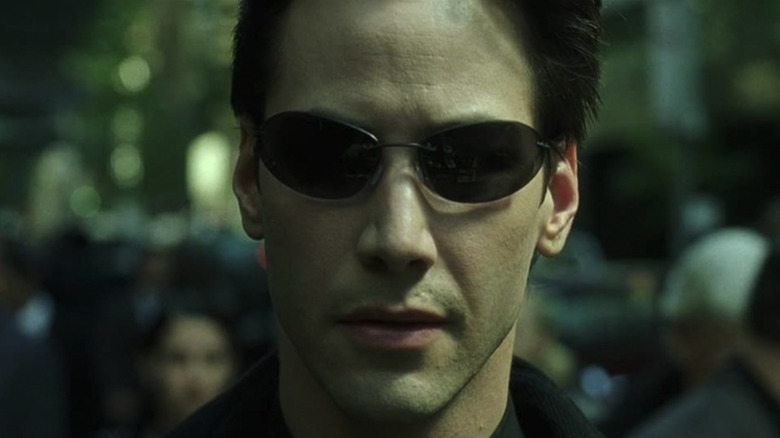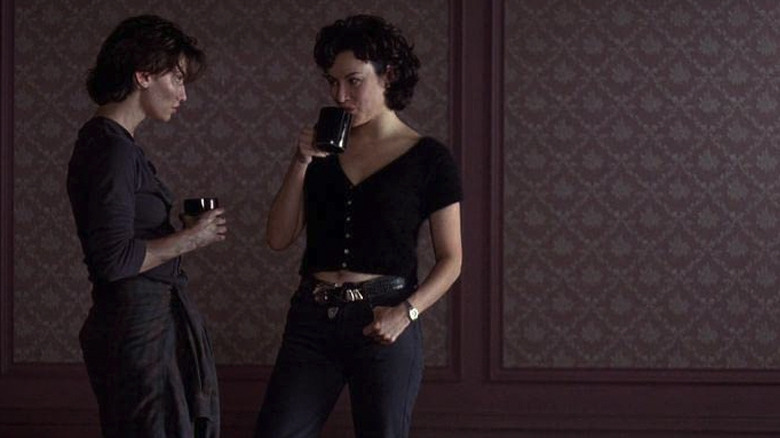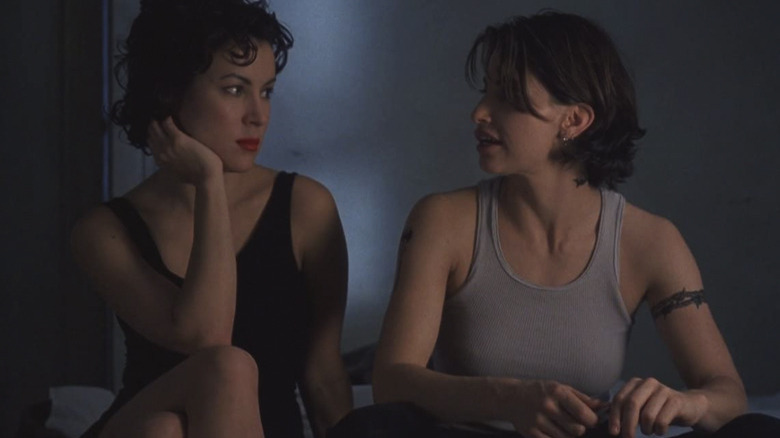The Story Of How The Wachowskis Landed The Matrix Is More Complex Than The Legend
With hype beginning to build for "The Matrix Resurrections," now is a good time to poke a hole in one of the biggest and most persistent myths about how writer/directors Lana and Lilly Wachowski convinced Warner Bros. to let them make the original 1999 movie. Let's lay out the legend behind the first film's creation and then get to the actual truth of how it got made.
The Legend
If you watched "The Matrix" in 1999 and were so blown away by it that you took to the Internet to find out everything you could about the mysterious filmmakers behind the movie, you probably came across a version of this story — a story that permeated cinephile circles so deeply that it is still believed by many today. The tale goes something like this: Chicago-based writer/directors Lana and Lilly Wachowski wrote "The Matrix" as a comic book, but quickly realized it should be a movie instead. With only one produced screenplay under their belts — the middling hitmen thriller "Assassins" — Warner Bros. would not let them direct such an ambitious science fiction project without proving their worth behind the camera. So they decided to make "Bound," a low-budget neo-noir about two lesbians who try to rip off the mob. That film was well received and liked by critics, and it proved to the studio that the Wachowskis were ready for the big leagues. WB gave them the go-ahead, and the rest is history.
The Truth
Except that's not quite how it happened. It turns out that story featured a little retrospective Hollywood myth-making, courtesy of "The Matrix" producer Joel Silver. When an interviewer asked them if "Bound" was indeed made as an audition piece to secure directing duties on "The Matrix," the duo rolled their eyes. "Joel made that up," Lana sighed.
What really happened was that the siblings had a negative experience with "Assassins," a mostly forgettable movie that is probably best remembered for giving us this perfect Antonio Banderas gif that has become a staple of social media. Their script was essentially taken away from them and rewritten, but WGA rules prevented them from removing their names from the project; luckily, they escaped from that experience mostly unscathed and decided to focus on directing a movie themselves.
But it's easy to see why Silver's narrative about "Bound" being a trial run still persists. The movie is a tightly plotted, sizzling little thriller that features several elements the Wachowskis would later incorporate into "The Matrix." Some of the themes are similar — they're both movies about being trapped in more ways than one — and a few of the visuals could basically work in either project: Gina Gershon's leather jacket and short hair are like a proto-version of Trinity, and there are several shots of telephones, wallpaper, elevators, boots, and overhead hallways that would be basically repeated in "The Matrix." "Bound" is also where the Wachowskis first worked with "Matrix" cinematographer Bill Pope and actor Joey Pantaliano. As Lana said in an early interview:
"We sort of made it for people who are kind of like us who go to the movies a lot and are generally kind of bored by movies today. We tried to make a movie that was entertaining, that had sex and violence because we like sex and violence. And that had a lot of deeper intellectual concepts...We had this idea about a woman who you would see on the street and make a host of sexual assumptions and they would all be wrong and that sort of lent itself to this constant idea of surfaces and truth under surfaces."
Of course, exploring the truth under the surface is what "The Matrix" is all about.
So while it's clear that the two movies were made by the same filmmakers, the story of how they made the jump from one film to the next is not quite as clear cut as the easily digestible Hollywood mythology would have you believe. The WB brass was almost certainly impressed by what they were able to accomplish with "Bound" — it remains an extremely impressive movie (streaming now on Hulu and Paramount+!) — but the notion that it was made specifically to pass some sort of studio test? That's like a perfectly cooked steak in the Matrix: juicy, but ultimately fake.


